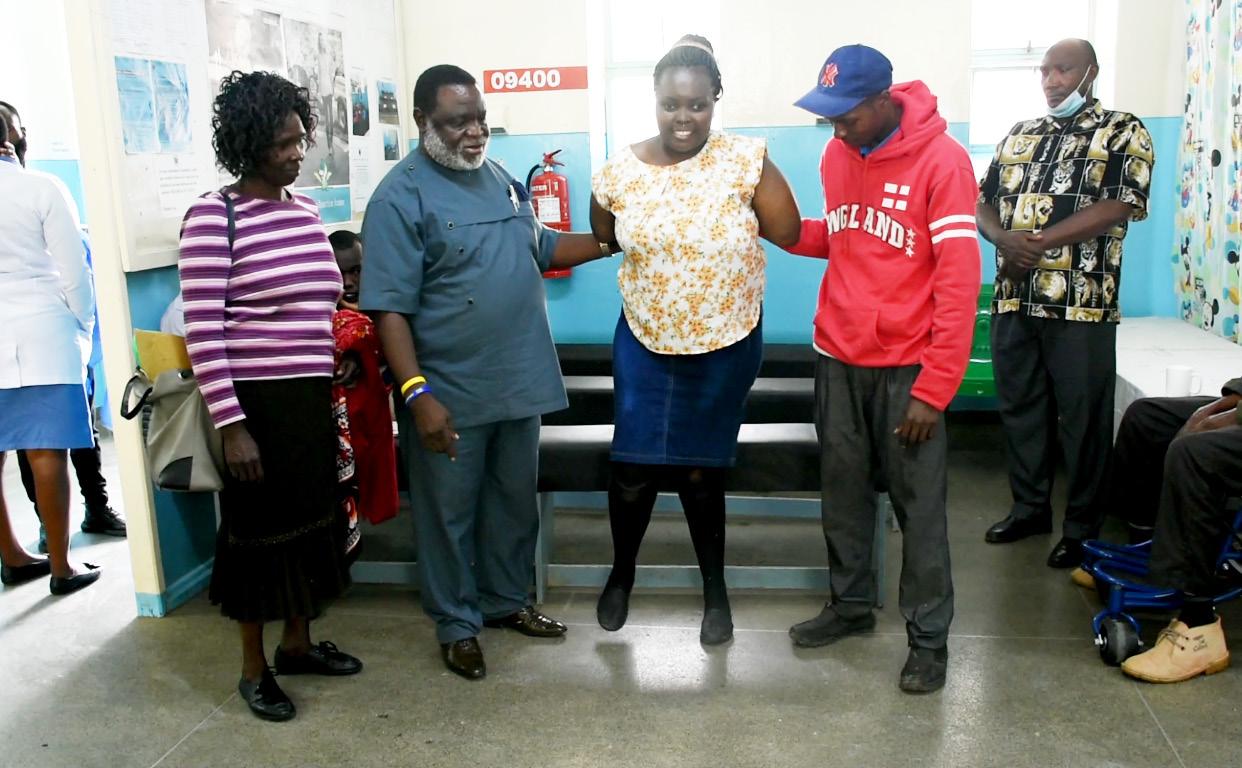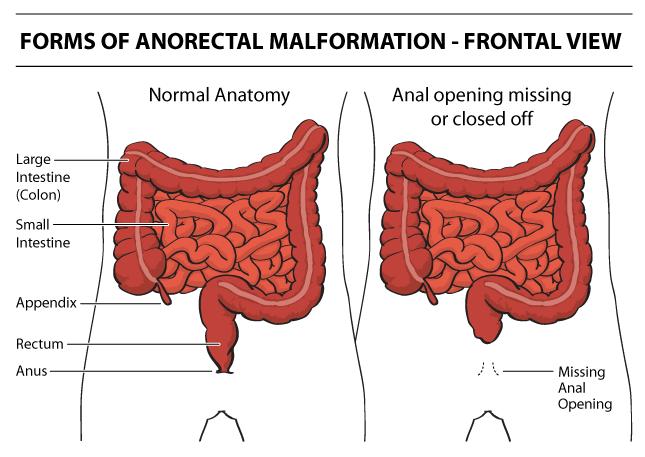
5 minute read
The Trans-tibial heroine Challenges experienced by children with Anorectal Malformations and the
The Trans-tibial heroine
PHOTO | EUGENE AMELI
Advertisement
HOD, KNH Orthapaedic technology - Mr. O.J Odiege (2nd, left) with Ms.Leah Muchiri (C) and her family memebers as she trains to walk again
brain, lungs, kidneys, and blood vessels. There is no cure for lupus erythematosus, but medical interventions and lifestyle changes can help control it. The condition can partially affect the sight and appendages (lower and upper limbs).
At such a tender age and fighting quadruple amputations and co-morbidities, she remains optimistic that things are bound to take an about-turn for better self-reliant days. The good news would be broken to her, not in any other hospital but Kenyatta National Hospital which takes pride in quality specialized health care services at affordable costs. At the Orthopaedic clinic, the solution to her problems started to unfold with treatment and physical assessment that revealed well-healed stumps with no skin issues as well as proper muscle grade and full range of motion of joints.
“Leah’s condition required prosthesis since she spent most of her time on a wheelchair. She attended physiotherapy sessions twice a week for several months. During these sessions, blood pressure and heart rate were monitored. She was very motivated and compliant with the program but often pushed the boundaries and had to be reminded of the risk of falling down. Currently, she is able to walk independently with minimal monitoring and shows promising continuous improvement,” said Senior Orthopedic Technologist Mr. Emmanuel Mayaka Onduso.
The strenuous compact outpatient program entailed an exercise program of strengthening for hip and knee extensors, prone lying and review of positioning as well as weight shifting and unsupported standing in the parallel bars progressing to eyesclosed balance. This included balancing on a foam cushion - while monitoring the time that she could sustain each, gait training- starting with walking unsupported with a gait belt and minimal assistance in the parallel bars and progressing to a four (4) point cane with a gait belt and assistance. It was also supported by walking with a single cane that has a widebased tip and finally to walking one hundred and twenty (120) meters with no gait aid (unsupported), at the KNH physiotherapy department.
“I can ascertain that, upon assessment, Leah exhibits and testifies to no pain, phantom pain (pain that feels like it’s coming from a body part that’s no longer there) or uncomfortable issues with her stumps or prostheses,” added Mr. Damiano.
“I thank all those who have made me walk again. I am slowly gaining independence in my daily chores and I will be faithful to all follow-up clinic visits. I hope to one day regain my hand functions also, although I know how costly it is, but I believe that with well-wishers or donor funding, this can be achieved in the near future,” said Ms. Leah Muchiri.
“Currently, she is able to walk independently with minimal monitoring and shows promising continuous improvement,”
- Emmanuel Mayaka
From the Medical Research desk:
Challenges experienced by children with Anorectal Malformations and the psychosocial effects on their parents
By Verah Mugambi
Research is defined as careful consideration of study regarding a particular concern or problem using scientific methods. According to American sociologist; Earl Robert Babbie, “research is a systematic inquiry to describe, explain, predict, and control the observed phenomenon. It involves inductive and deductive methods.”
Kenyatta National Hospital recognizes the importance of research as a strategy towards realization of its vision to be “A world-class patient centered specialized care Hospital”. In this regard, the Hospital has set aside funds to be disbursed through the KNH Medical Research and Programs Department to promote new knowledge acquisition within the Hospital.
Ms. Rose Njoroge, HSC, Registered Senior Nurse and Counselling Psychologist at Kenyatta National Hospital in the specialized surgical ward-4A, recently completed a clinical study together with two of her colleagues, Patrick Too and Norah Mwenda.
Ms. Rose expounded on the research, and started by defining the title of the study: “Anorectal Malformations (ARMS) are birth defects, or problems that happen as a foetus is developing during pregnancy. They interfere with the normal passage of stools. ‘Ano’ means the anus. With this defect, the anus and rectum (the lower end of the digestive tract) don’t develop properly and can range from mild to complex.
“Anorectal malformations, affects male and female babies in different ways. In boys, the main anorectal malformations are perineal fistula, rectobulbarurethral fistula, rectoprostatic fistula and rectobladderneck fistula. In girls, the main anorectal malformations are rectoperineal fistula, rectovestibular fistula and cloaca”.
The study is the first of its kind done by the Nurses of ward 4A and included the psychological aspect of the children as well as their parents which form holistic care of our patients at KNH.

What motivated you to research on this specific topic?
Ms. Rose: An Anorectal malformation is a condition affecting 40% of the children admitted at the KNH specialized paediatric surgical wards and that’s a huge number. In early 2020 during the Covid-19 pandemic, our country Kenya and the rest of the world went to a standstill; lock-downs, disruption of clinics, admissions and also elective surgeries were postponed and the number of kids brought to the clinics went down.
This condition is diagnosed at birth and the surgery is supposed to be done as soon as possible. When mothers stopped delivering at the hospitals, it was a concern to me since we know the severity of the condition and the psychological effect to the parents/the care giver. I therefore wanted a way to reach out to the mothers and therefore I asked two of my colleagues to join me in conducting the research.
The research was funded by KNH Medical Research and Programs Department and the study population was 123. It took financial year 2020/2021 to finish it. “We used the data provided by the hospital which we got from our data centre no.19, went through the files of ARM cases and we picked their contacts
PHOTO | UCSF










